
We Believe in Quality
An ISO:9001 : 2000 Certified Company

We Believe in Quality
An ISO:9001 : 2000 Certified Company
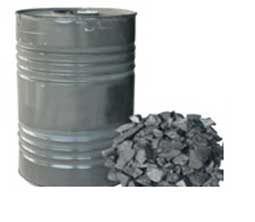 |
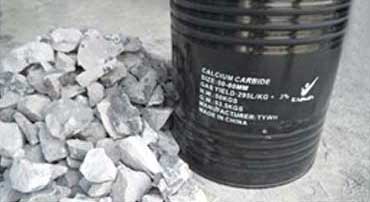 |
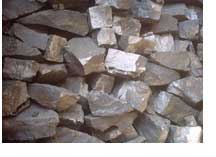 |
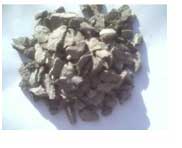 |
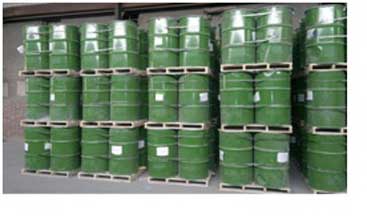 |
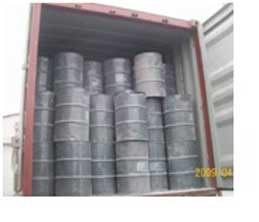 |
Calcium carbide is a chemical compound with the chemical formula of CaC2. The chemical is mainly used industrially for the production of acetylene and calcium cyanamide.
|
|
||||||||||||||||||||||||||||||||||||||
The pure form of the chemical is colorless, however pieces of technical-grade calcium carbide are grey or brown and comprise of about 80-85% of CaC2. And rest 20% include CaO (calcium oxide), Ca3P2 (calcium phosphide), CaS (calcium sulfide), Ca3N2 (calcium nitride), SiC (silicon carbide), etc.).
Production of acetylene : One of the main applications of the chemical is creation of acetylene. Friedrich Wohler discovered that the reaction of calcium carbide with water generates acetylene and calcium hydroxide in 1862.
CaC2 + 2 H2O -> C2H2 + Ca(OH)2
Production of calcium cyanamide : The chemical reaction between calcium carbide with nitrogen at high temperature forms calcium cyanamide:
CaC2 + N2-> CaCN2 + C
Calcium cyanamide is used as fertilizer. It is hydrolysed to cyanamide, H2NCN.
Carbide lamps : The calcium carbide is also used in carbide lamps, were usable but dangerous in coal mines. In the coal mines, the gas reacts with the flammable gas methane. The carbide lamps are still used extensively in slate, copper, and tin mines, where methane is not a serious hazard.
Other Uses : Calcium carbide is sometimes also used for the artificial ripening of fruit. However, it is not legally approved as consumption of fruits artificially ripened using calcium carbide can lead to serious health problems in those who consume them.
Calcium carbide is also used in steelmaking for desulfurization of Iron.
With the formula (CH3)2CO, Acetone is an organic compound used for the production of acetone. The chemical is a colorless, volatile, flammable liquid, and is the simplest ketone. Used for cleaning purposes in the laboratory, the Acetone is miscible with water and serves as an important solvent. The main use of the chemical is to produce methyl methacrylate and bisphenol A.
The worldwide production of acetone was estimated at 6.7 million tonnes per year in 2010. One of the biggest producers in the world is United States followed by Taiwan and mainland China. Normally present in blood and urine, it is also produced and disposed of in the human body through normal metabolic processes.
Solvent : Since the chemical is a good solvent for many plastics and some synthetic fibers, 1/3 of it used as a solvent. In addition, it is also employed for thinning polyester resin, cleaning tools used with it, and dissolving two-part epoxies and superglue before they harden. The item is employed as a solvent by the pharmaceutical industry and as a denaturant in denatured alcohol. On the other hand, it is also present in some pharmaceutical drugs.
Laboratory : The acetone is popularly employed as a polar, aprotic solvent in a variety of organic reactions in the laboratories. Due to the low cost and volatility, it is a common solvent for rinsing laboratory glassware. In the laboratories, it has a number of functions. In fact, the chemical not form an azeotrope with water.
Medical and Cosmetic Uses : There are a number of uses of the items in general medical and cosmetic applications. It is also listed as a component in food additives and food packaging. Dermatologists employ it with alcohol for acne treatments to peel dry skin. Apart from chemical peeling, it is also employed for removing the excess fat from the skin.
With the formula CaCl2, calcium chloride is a salt of calcium and chlorine. It remains solid at room temperature. Brine for refrigeration plants, ice and dust control on roads, and desiccation are some of its common applications. The anhydrous calcium chloride must be stored in tightly sealed and air-tight containers due to its hygroscopic nature.
Soluble in water, Calcium chloride can act as a source of calcium ions in an aqueous solution. It is vital for displacing solution by calcium:
3 CaCl2(aq) + 2 K3PO4(aq) -> Ca3(PO4)2(s) + 6 KCl(aq)
There are different uses of the chemical, including :
The possible side effects of taking calcium chloride include :
It can be taken with the consent of healthcare provider. If you are a pregnant woman or want to be so, consult your healthcare provider before taking it.
Acetylene gas is produced by reaction of calcium carbide and water. The gas comprises of a number of impurities for instance Sulphur, Phosphorus, Arsenic, Ammonia, Hydrogen Sulphide, Phosgene, etc. They are harmful as well. Acetylene Purifying Mass (Regenerative Type) & (Non-Regenerative Type) is employed to remove the impurities.
The acetylene purifying mass regenerative type is a colorless gas, which is widely employed as a fuel and a chemical building block. It is mostly manufactured by partial combustion of methane.
Following are the impurities from acetylene gas generated by the acetylene generator :